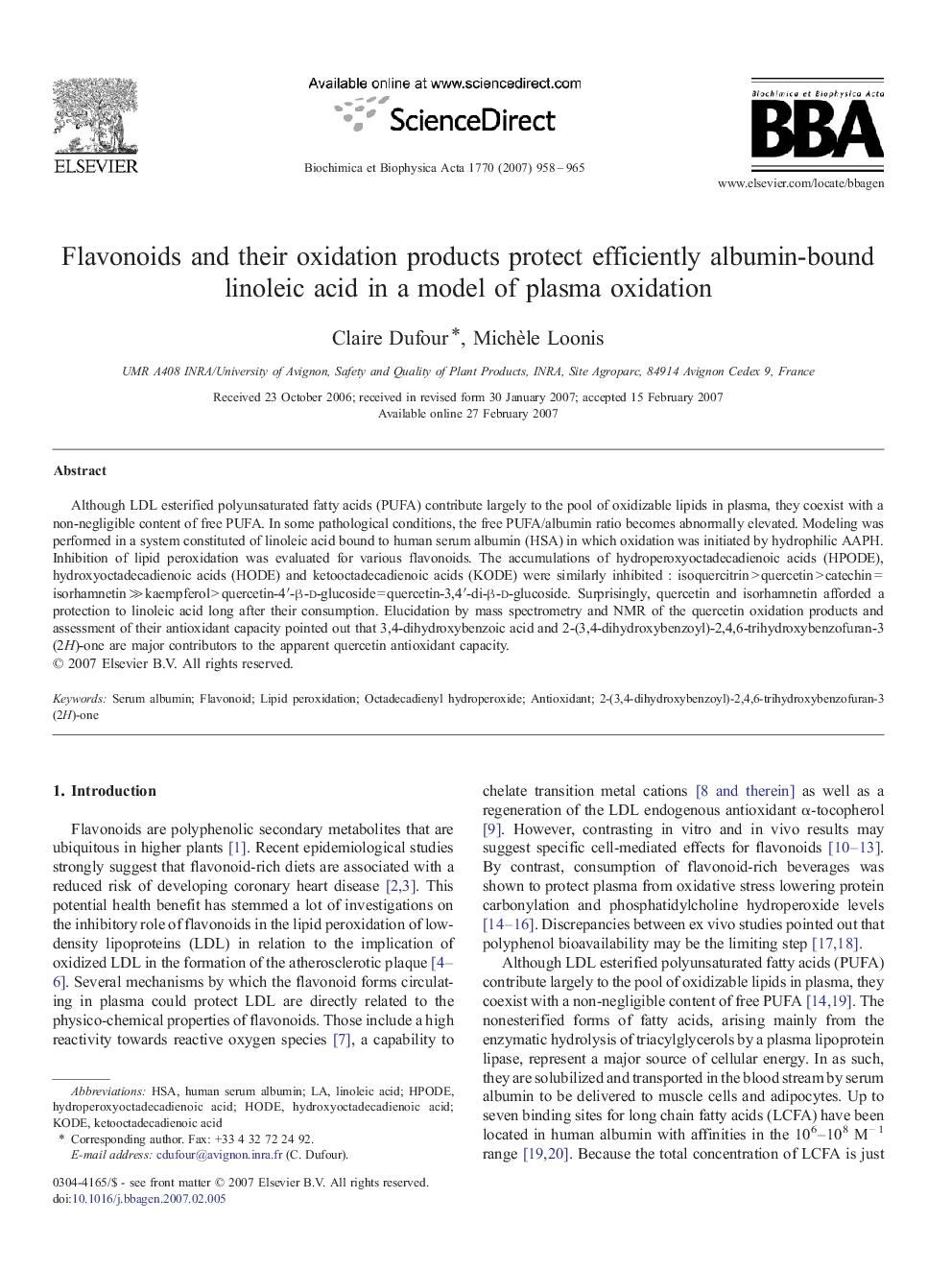| Article ID | Journal | Published Year | Pages | File Type |
|---|---|---|---|---|
| 1948548 | Biochimica et Biophysica Acta (BBA) - General Subjects | 2007 | 8 Pages |
Although LDL esterified polyunsaturated fatty acids (PUFA) contribute largely to the pool of oxidizable lipids in plasma, they coexist with a non-negligible content of free PUFA. In some pathological conditions, the free PUFA/albumin ratio becomes abnormally elevated. Modeling was performed in a system constituted of linoleic acid bound to human serum albumin (HSA) in which oxidation was initiated by hydrophilic AAPH. Inhibition of lipid peroxidation was evaluated for various flavonoids. The accumulations of hydroperoxyoctadecadienoic acids (HPODE), hydroxyoctadecadienoic acids (HODE) and ketooctadecadienoic acids (KODE) were similarly inhibited : isoquercitrin > quercetin > catechin = isorhamnetin ≫ kaempferol > quercetin-4′-β-d-glucoside = quercetin-3,4′-di-β-d-glucoside. Surprisingly, quercetin and isorhamnetin afforded a protection to linoleic acid long after their consumption. Elucidation by mass spectrometry and NMR of the quercetin oxidation products and assessment of their antioxidant capacity pointed out that 3,4-dihydroxybenzoic acid and 2-(3,4-dihydroxybenzoyl)-2,4,6-trihydroxybenzofuran-3(2H)-one are major contributors to the apparent quercetin antioxidant capacity.
